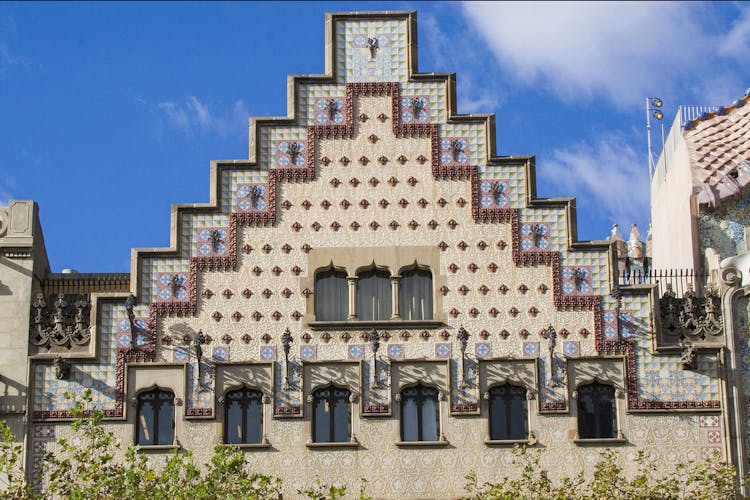Just three meters below St. Peter's Basilica floor are the Vatican Grottoes – a network of underground chapels and tombs holding centuries of secrets. This sacred space houses the remains of over 90 popes and royals, butthe highlight is what many believe to be the final resting place of St. Peter himself, Jesus's apostle and the first pope.
What makes this underground marvel truly special isn't just the treasures it contains, but the dramatic story behind their discovery – a secret excavation during World War II that revealed the very foundations of Christianity. Read this blog to know about the secrets that await beneath the Vatican's magnificent basilica.
History of Vatican Grottoes
Timeline of discovery and development
- 1520 - The concept of the grottoes first emerges through designs by architect Antonio da Sangallo the Younger, presented to Pope Leo X.
- 1590-1591 - The system of vaults forming the Vatican Grottoes is constructed to support the Renaissance basilica's floor.
- 1592 - Pope Clement VIII renovates the medieval crypt, naming it "Clementine," and positions it near St. Peter's tomb.
- 1616-1617 - Pope Paul V adds corridors leading to St. Peter's Confessio and commissions chapels adorned with frescoes depicting miracles at Peter's tomb.
- 1623-1644 - Under Pope Urban VIII, Gian Lorenzo Bernini designs four oratories connected to the grottoes by spiral staircases.
- 1940 - Pope Pius XII secretly authorizes excavations beneath St. Peter's Basilica during World War II.
- 1941 - Workers discover a Roman mausoleum dating from AD 130-170, prompting deeper excavations.
- 1942 - Bones believed to be St. Peter's are found and secretly transferred to the Pope's apartment.
- 1968 - After scientific verification, Pope Paul VI announces that St. Peter's relics have been identified.
- 1979 - A large archway opens in the central grottoes, revealing the Confessio and Niche of the Pallia near St. Peter's tomb.
- 2013 - Pope Francis reaffirms the authenticity of St. Peter's remains and returns them to public view.
Can you visit the Vatican Grottoes?
Absolutely! The Vatican Grottoes are open to visitors every day from 9am to 6pm, and the entrance is completely free. To access this underground treasure, you'll first need to enter St. Peter's Basilica. Once inside, look for the staircase near the papal altar (it's close to the statues of St. Helen and St. Andrew) and make your way down.
Here's a pro tip: explore the basilica first before heading to the grottoes, as exiting the grottoes will lead you outside the church. If you want to return to the basilica afterward, you'll need to rejoin the entrance queue – and we all know how long that can get!
For a deeper experience, guided tours are available with online booking. Want to go even deeper? The special Scavi Tour takes you to the ancient necropolis below the grottoes, but requires advance reservations.

Recommended tickets to Vatican
What was found in the Vatican Grottoes
1The Tomb of Saint Peter
Right beneath St. Peter's Basilica's high altar lies what many consider Christianity's most significant burial site – the tomb of St. Peter himself. During the 1940s excavations, archaeologists uncovered a modest burial marked by the "Trophy of Gaius," a 2nd-century monument mentioned in historical records.

2Skeletal remains attributed to Saint Peter
During the excavations, bones were found in a niche behind the Graffiti Wall near the Trophy of Gaius. These remains belonged to a man aged between 60 and 70 years, consistent with historical accounts of Peter's age at death. The bones were wrapped in a purple and gold cloth, signifying high status. After extensive analysis, Pope Paul VI announced in 1968 that these bones were identified as those of Saint Peter.

3Ancient Mausoleums and Tombs
The Vatican Grottoes house a series of ancient Roman mausoleums dating from the 2nd to 4th centuries. These include Mausoleums A through O, each containing intricate frescoes, inscriptions, and burial artifacts. Notably, Mausoleum M was described as early as 1574, while others were discovered during various construction projects beneath the basilica.

4Graffiti Wall inscriptions
Adjacent to the presumed tomb of Saint Peter is the Graffiti Wall, bearing numerous inscriptions by early Christian pilgrims. Among these, the phrase "Peter is here" was deciphered by epigrapher Margherita Guarducci, providing compelling evidence linking the site to the apostle.

5Papal and Royal Tombs
The grottoes serve as the final resting place for 91 popes, including Pope John Paul II, whose remains were initially interred here before being moved to the Altar of St. Sebastian. Additionally, the grottoes contain the tombs of notable royals, such as Queen Christina of Sweden and Queen Charlotte of Cyprus.

6The Clementine Chapel
Located within the grottoes, the Clementine Chapel is a significant religious site believed to mark the location of Saint Peter's crucifixion. Constructed in the early medieval period, the chapel houses a pavonazzo marble monument placed by Emperor Constantine and was used for the veneration of Peter's relics.

Vatican Grottoes: 8 mind-blowing facts
- Secret wartime discovery: The excavations that revealed St. Peter's tomb were conducted during WWII bombing threats and kept completely secret until 1949!
- Ancient origins: Some tombs in the necropolis below date back to the first and second centuries – making them nearly 2,000 years old.
- The writing on the wall: The Graffiti Wall contains over twenty inscriptions of Peter's name, with several clearly stating "Peter is within."
- Physical evidence: The bones believed to be St. Peter's come from a robust 60-70 year old man – exactly matching historical accounts of the apostle.
- Royal treatment: Saint Peter's bones were wrapped in purple and gold cloth – a burial practice reserved exclusively for individuals of imperial or sacred status.
- Exclusive access: The deeper Necropolis tour is highly restricted – children under 12 aren't permitted, groups are limited to just 15 people, and you'll need to book months in advance!
- Papal gesture: In 2019, Pope Francis gifted nine fragments of Peter's bones to the Orthodox Patriarch of Constantinople as a symbol of unity between Eastern and Western churches.
- Hidden levels: The Vatican actually has three underground levels: the grottoes, the necropolis, and a modern cemetery.


